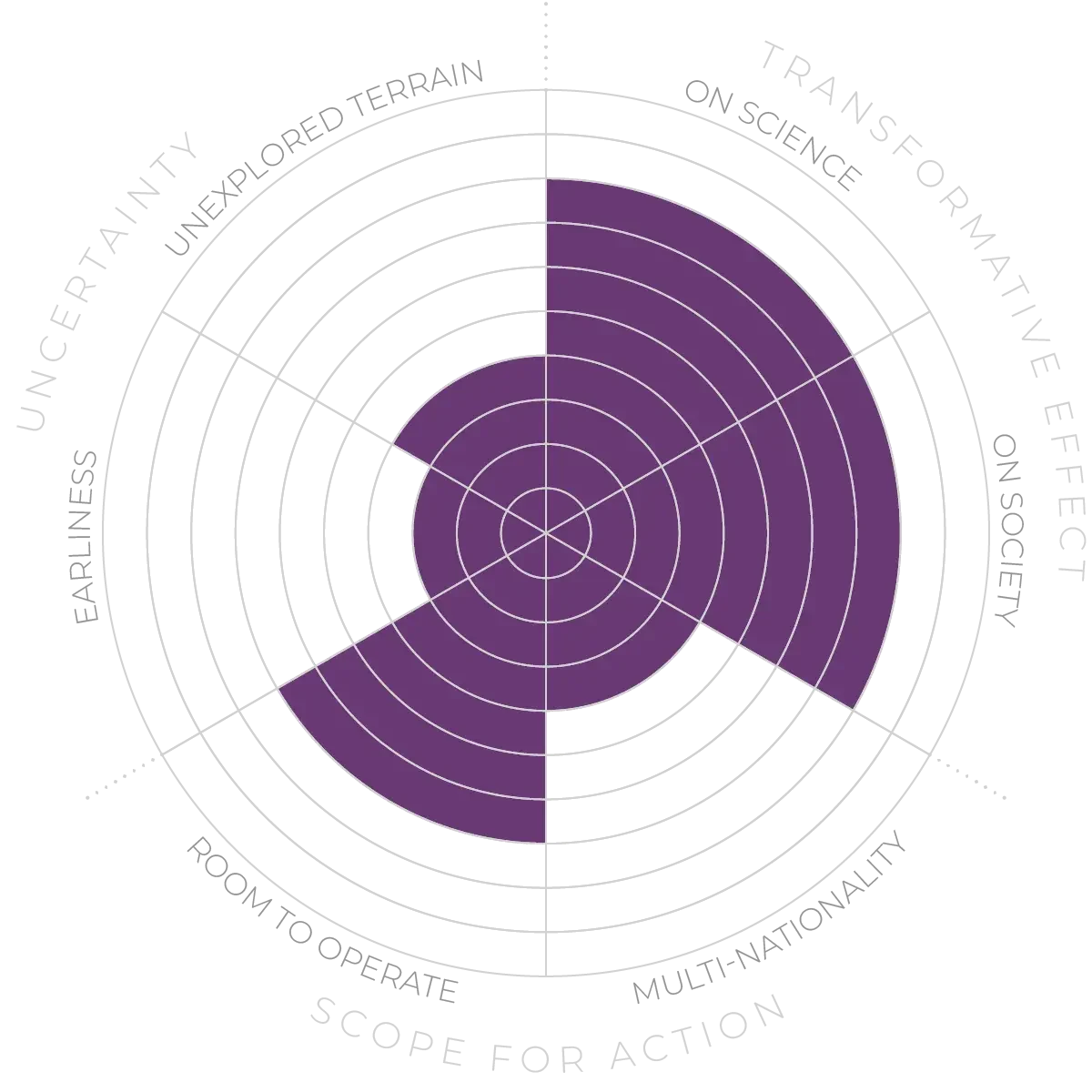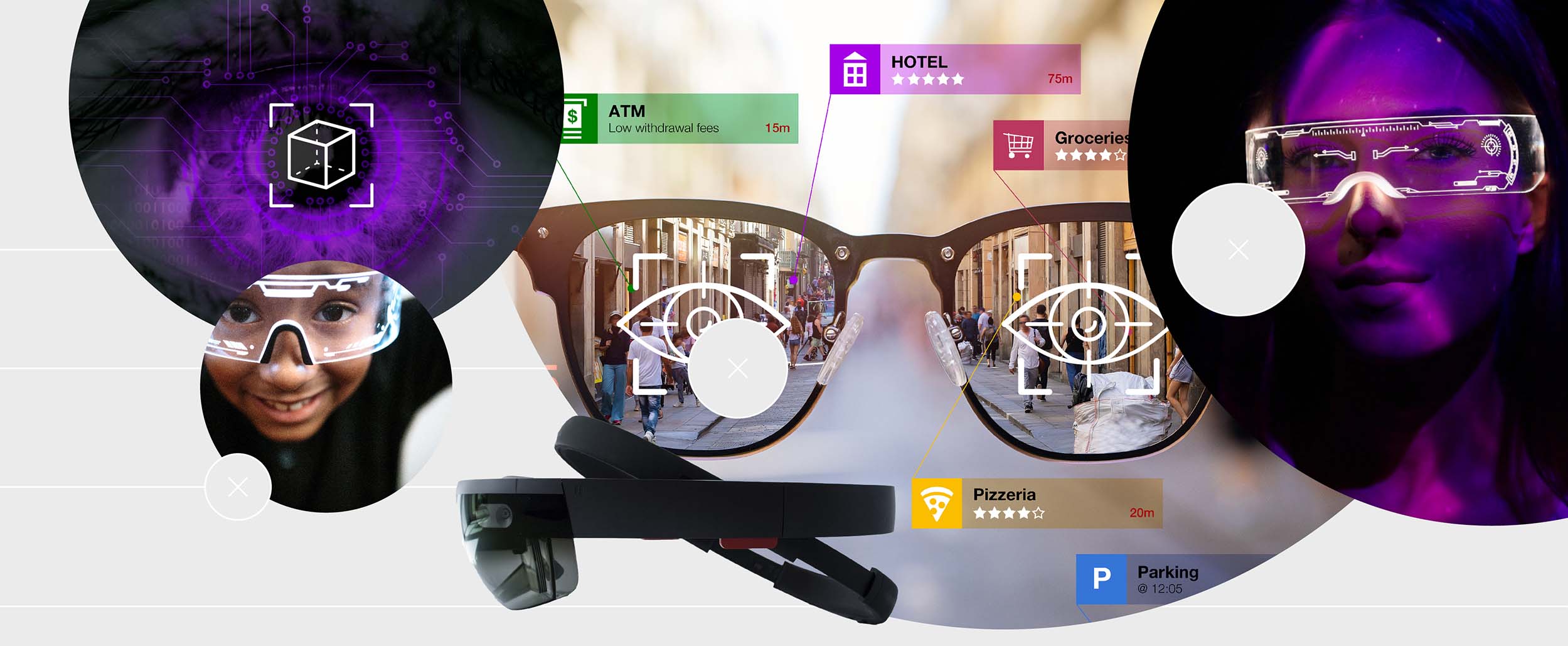Future Horizons:
10-yearhorizon
AR displays can be worn all day
25-yearhorizon
AR and VR begin to feel like reality
All of these devices are ungainly and power-hungry. For the technology to achieve widespread use, it needs to be indistinguishable from a normal pair of glasses. This will require breakthroughs in optics,10 energy-efficient computing and wireless communication, but the biggest challenge is safely dissipating heat from on-board electronics.11 Balancing the competing pressures will require careful co-design of hardware and software.12
Tricks like “foveated rendering”,13 where the eyes are tracked and only the area of focus is rendered in high definition, could help sidestep hardware limitations. A companion device, such as a smartphone that does the bulk of the processing, or sensors with built-in processing capabilities, could also reduce computational loads.14.
Creating truly immersive augmented reality will also require breakthroughs in generalised haptics that can mimic a wide variety of sensations. Spatial audio could work in concert with visual cues to deepen immersion or guide attention,15 and physiological monitoring through EEG and skin conductance could help understand the user’s intention to optimise the information displayed. Augmented reality may eventually be mediated by brain-machine interfaces connected directly to the nervous system.
Augmented reality hardware - Anticipation Scores
The Anticipation Potential of a research field is determined by the capacity for impactful action in the present, considering possible future transformative breakthroughs in a field over a 25-year outlook. A field with a high Anticipation Potential, therefore, combines the potential range of future transformative possibilities engendered by a research area with a wide field of opportunities for action in the present. We asked researchers in the field to anticipate:
- The uncertainty related to future science breakthroughs in the field
- The transformative effect anticipated breakthroughs may have on research and society
- The scope for action in the present in relation to anticipated breakthroughs.
This chart represents a summary of their responses to each of these elements, which when combined, provide the Anticipation Potential for the topic. See methodology for more information.



